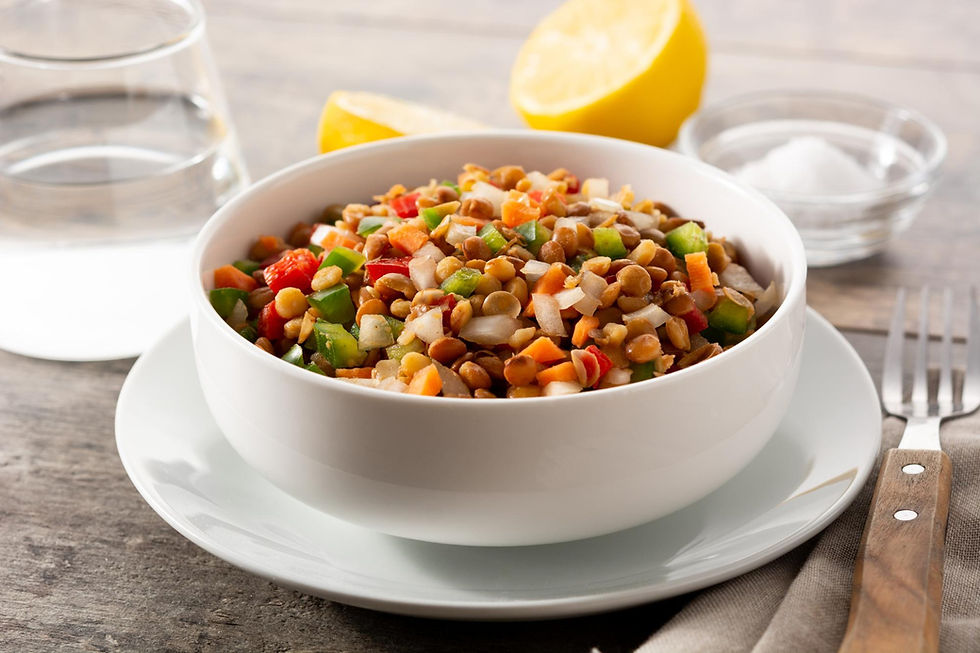Fibre-Maxxing: Practical Strategies to Build Gut, Heart, and Brain Health
- Carla
- Sep 12
- 2 min read

There’s a new buzzword making the rounds in UK nutrition circles, and for good reason. It's called fibre-maxxing, and it’s all about increasing your fibre intake strategically to support not just your gut, but your heart, brain, and metabolic health too.
At The Heart of the Matter Nutrition, fibre-maxxing aligns perfectly with the functional, whole-person approach I offer, helping you make science-led changes that are both effective and sustainable.
🌾 What Is Fibre-Maxxing?
Fibre-maxxing is a growing wellness trend focused on gradually increasing your daily fibre intake from real, whole foods, not supplements or powders, to help diversify your gut microbiome, support cardiovascular health, regulate blood sugar, and even improve mood and focus.
It’s not about eating loads of raw vegetables overnight. It’s about small, daily tweaks that bring your diet closer to the recommended 30g of fibre per day (something fewer than 10% of UK adults currently meet).
🦠 Why Fibre Matters
Fibre feeds your beneficial gut bacteria, which produce short-chain fatty acids that reduce inflammation, strengthen your gut lining, and communicate with your brain and hormones.
Some benefits of fibre-maxxing include:
🧠 Improved cognitive clarity
💓 Better cholesterol and blood pressure balance
🧘♀️ Stabilised blood sugar and fewer energy crashes
🌿 Relief from constipation, bloating, and sluggish digestion
🌈 Greater microbiome diversity (linked to better immunity and mood)
🥗 How to Start Fibre-Maxxing Without Overwhelm
Here are my favourite ways to build up fibre gradually and safely:
1. Start Low and Go Slow
Jumping from 10g to 30g overnight can cause gas and bloating. Begin by adding 3–5g more each week.
2. Eat the Rainbow
Include a variety of plant foods daily: berries, pulses, seeds, vegetables, oats, and grains. Each type of fibre feeds different microbes.
3. Add More Resistant Starch
Cooked and cooled potatoes, green bananas, and oats support both metabolic and gut health.
4. Include Fibre at Every Meal
This helps regulate blood sugar and reduce cravings. Think: chia puddings, lentil soups, and roasted root vegetables.
5. Stay Hydrated
Fibre works best with water. Aim for 1.5–2L per day to keep things moving.
6. Keep a Symptom Diary
If you feel bloated or uncomfortable, check in with your gut and adjust your fibre intake accordingly.
🧬 Fibre and Functional Nutrition
Through my one-to-one consultations and online nutrition programmes, we explore how fibre intake affects your gut, hormones, and mental clarity, especially for women navigating perimenopause, stress, or IBS.
We also use functional testing to assess how well your body is digesting and utilising fibre, and to support a personalised gut-healing plan.
Fibre-maxxing is about reconnecting with your body’s needs, one nourishing habit at a time. With the right guidance, it’s an empowering and accessible shift toward long-term health, not another short-term fix.







Comments